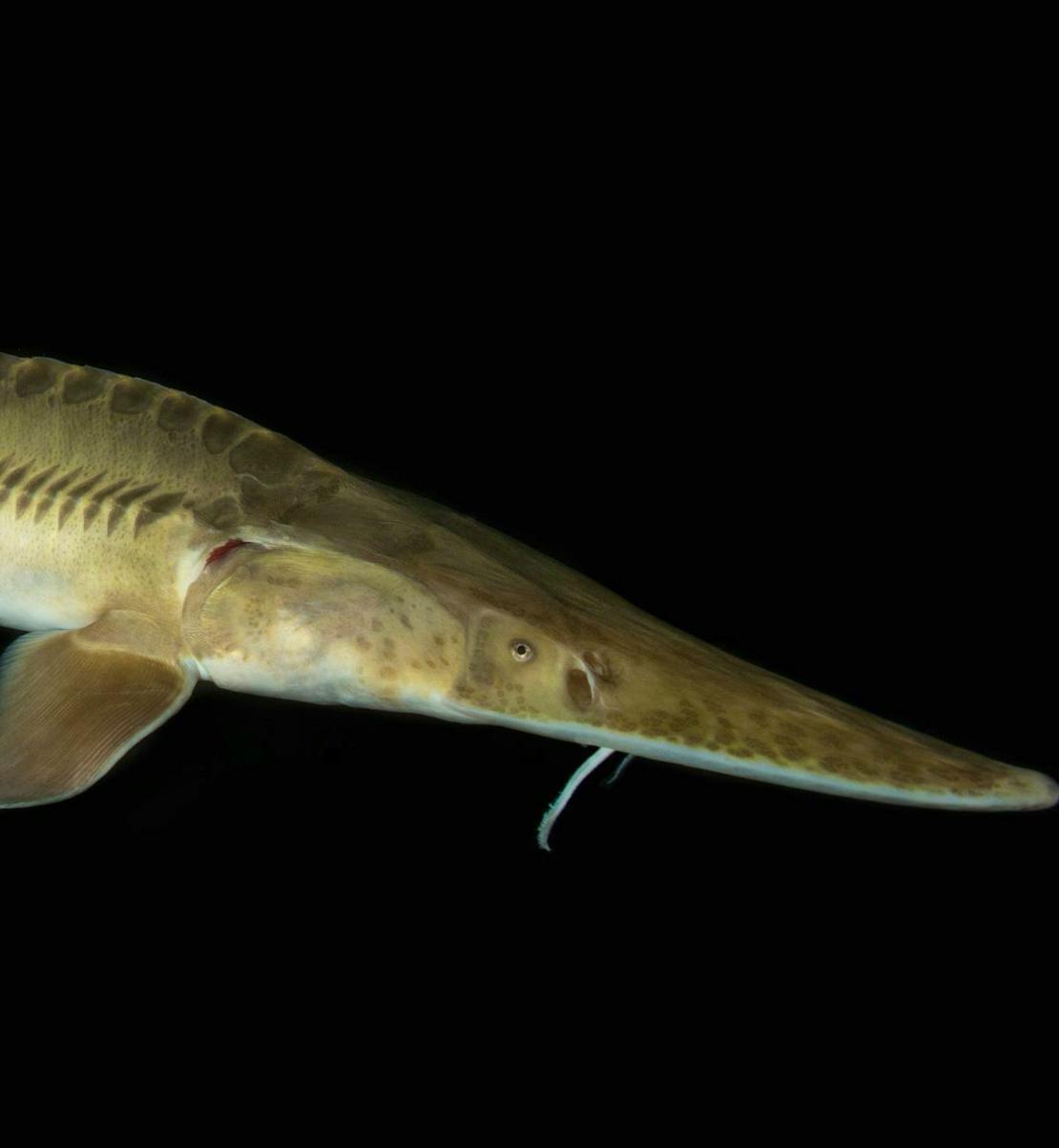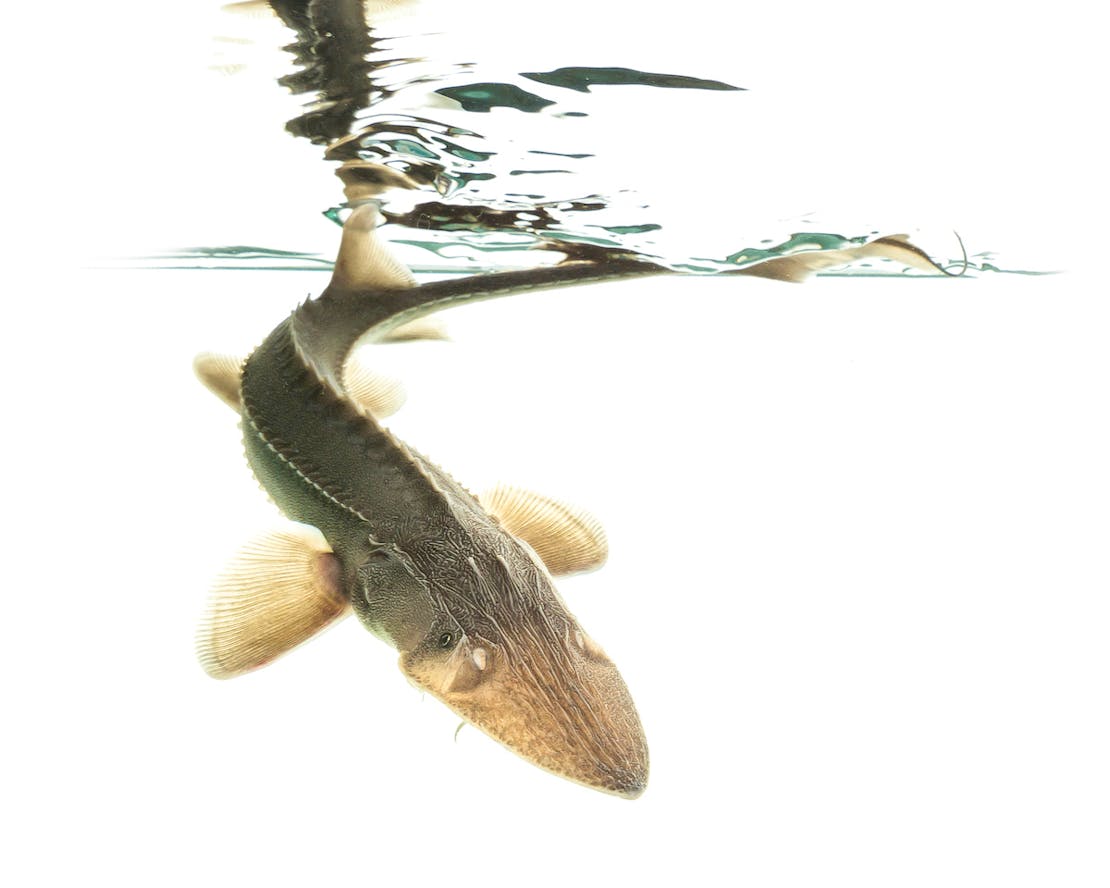Join our mobile Rapid Response Network!
You can be the first to hear about how we’re going to hold this administration accountable and how you can fight back for wildlife!
Pallid sturgeon are one of the largest freshwater fish in North America, characterized by their bony plates and pale appearance.
They are an ancient 'dinosaur fish' whose ancestors date back 78 million years. For generations, the pallid sturgeon swam freely in rivers from Montana to New Orleans. But dam building in the 1900s disrupted the rivers’ natural sediment, flow, temperature and oxygen levels. This destroyed and cut off access to much of the sturgeon’s spawning grounds. They might swim hundreds of miles upstream to spawn, and their eggs float back downstream until they hatch.
Unfortunately, most of these eggs end up in man-made reservoirs where they sink to the bottom of oxygen-deprived reservoirs and die. For possibly as many as 60 years, no wild-born pallid sturgeon—protected as an endangered species since 1990—has survived to adulthood.
The primary cause of reproductive failure is due to dams and other human modifications of the river. Pallid sturgeon are blocked from upstream migration, and young larval sturgeon are trapped by dams.

Defenders' Impact
In addition to advocating for aquatic connectivity throughout the pallid sturgeon’s range, we have litigated in court since 2015, twice receiving temporary injunctions to stop the Army Corps of Engineers and Bureau of Reclamation from building a larger concrete structure across the lower Yellowstone River at Intake, Montana to replace a smaller primitive rock structure that currently diverts water for irrigation.
The best way to save the pallid sturgeon population in the Yellowstone River is to remove the existing structure at Intake and to restore a free-flowing river, giving pallid sturgeon access to an additional 165 miles of river. Unfortunately, our most recent preliminary injunction was overturned by a higher court in April 2018, meaning that construction of the concrete dam could begin immediately.
We argued the merits of the entire case in Montana District court on April 26, 2018. The resulting ruling was not in our favor and allows construction for this devastating project to start. Despite this, we continue to monitor the project, and the sturgeon population, with the hope that positive opportunities will exist in the future to again intervene on behalf of pallid sturgeon recovery.
What You Can Do
If you live in Montana, contact your state legislators and tell them how great the endangered Pallid Sturgeon is. Tell them you support the state of Montana taking a stronger stance on protecting this fish. Limit pesticide use and pollution of waterways.

About
Pallid sturgeon inhabit the entire Missouri River and its major tributaries and prefer large, silty rivers.
Today, approximately 100 wild Pallid Sturgeon live in the upper Missouri River system above Lake Sakakawea. Estimates of the population in other parts of their range are less easy to quantify.
They swim mostly near the bottom of large, silty rivers, and use their barbels to sense food. When they find food, they use their suction-like mouths to grab it.
When mature, they swim hundreds of miles upstream where many sturgeon will congregate to spawn. After their eggs hatch, they drift with the river current for up to two weeks before they are able to swim and feed on their own.
Mating Season: Spring, depending upon River flows
Gestation: Eggs hatch after 3-8 days, then drift before they can swim on their own for another 8-14 days.
Litter size: 100,000 eggs or more
Pallid sturgeon eat aquatic invertebrates when they are young, and gradually switch to eating other fish as they grow older and larger.
News







